New Nissan Leaf brings game-changing technology
This car looks like any other on the road, but it has a genius trick up its sleeve that could change the way we think about vehicles.
New Cars
Don't miss out on the headlines from New Cars. Followed categories will be added to My News.
It has ability to power your house and feed electricity back into the grid, making the new mid-sized electric hatchback more than just a means of transport. It could keep the lights on — and air-con, toaster, hot water and more — for days.
Otherwise, it’s almost identical to the regular Leaf, apart from a bigger battery pack that unleashes more power.
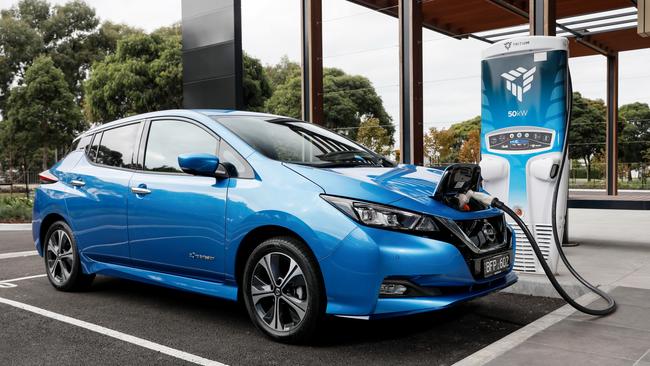
The 62kWh battery — 22kWh more than the regular Leaf that is still available — adds 115 kilometres to the claimed range, bringing it to 385km.
But it’s the bi-directional charging capability that Tim Washington, the founder of EV infrastructure supplier Jet Charge, believes could be most useful to buyers prepared to take the circa $64,000-drive-away plunge for the e+.
“With the e+ you get another day of electricity for your home,” says Washington, who adds it could remove the need to splash out on a home battery.
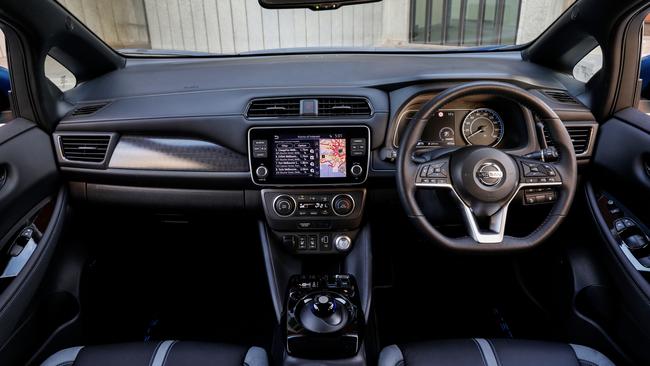
Similar capacity in Tesla home storage — five Powerwalls totalling 67.5kWh — would cost $59,700 plus installation (most homes wouldn’t need anything like that capacity).
“I think it will take a big market away from stationary storage.”
There’s a catch, though. The hardware required for bidirectional charging will cost about $8000 (or more) and still hasn’t been certified, although it has been promised by the end of the year.
Despite the home powering practicality, the Leaf e+ is designed to be driven.
You’ll need a careful eye to spot the e+ over the garden variety Leaf, which continues at $53,190 drive-away.

A body that sits 5 millimetres higher is one giveaway — it accommodates the larger battery pack — while another is the blue stripes at the lower edge of each bumper.
Elsewhere it’s identical, including space inside the five-seat, five-door hatchback.
Those upfront are well catered for with head and elbow room, although the higher back seats take their toll on hair space.
The lack of rear air vents or USB ports also reinforces the Leaf is more about those up front. And the basic presentation lacks the flair of a Tesla Model 3, which also offers more range and performance (but no bidirectional charging) for about $2500 more.
There’s also a clunky foot-operated park brake. The boot is a useful 405 litres, although the Bose hardware bolted to the floor could get in the way.
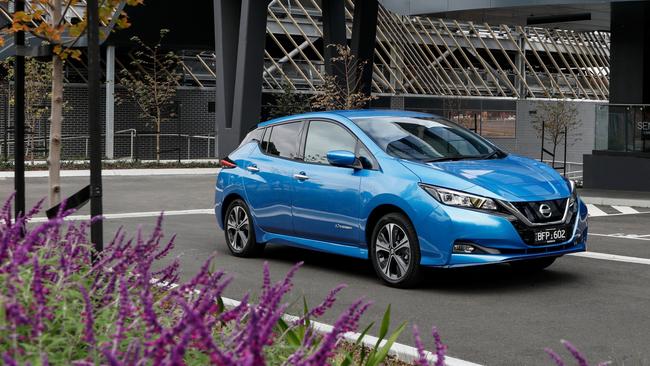
Equipment levels are identical between the two Leafs, each getting the 17-inch alloys, active cruise control, satnav, digital radio tuning, seven-speaker Bose sound system and 8.0-inch touchscreen with Apple CarPlay and Android Auto. There’s also blind-spot warning, rear cross-traffic alert, auto braking and parking sensors at either end to complement the 360-degree camera.
Another advantage of the bigger battery is its ability to send more electrons, translating to more power and torque from the motor driving the front wheels.
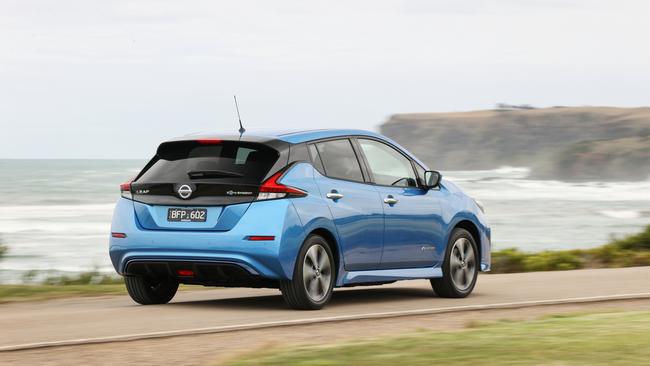
It’s stepped up to 160kW and 340Nm (up from 110kW/320Nm), in turn shaving a second off the 0-100km/h time, now 6.9 seconds.
It’s noticeably perkier and can easily trigger the traction control if you’re eager out of an intersection or roundabout.
The transmission’s B mode brings in more aggressive regenerative braking and feels like you’re grazing the brake gently. E-pedal steps that regeneration process up and will eventually stop the car, allowing one-pedal driving in traffic if your judgment is right.
The extra grunt introduces a hint more wheel tugging to the inside of a tight corner as you’re accelerating.
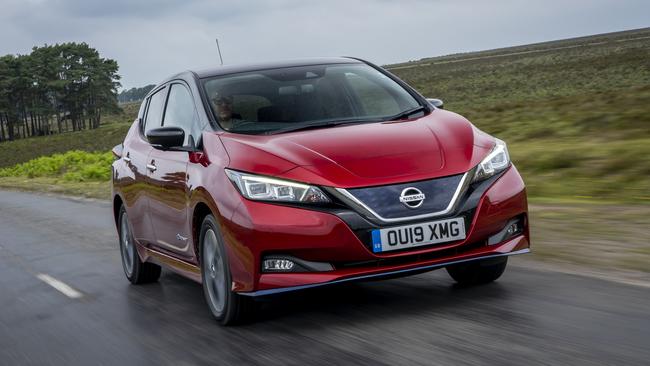
It’s one of the indications the Leaf e+ is more about city slicking than smile-inducing in the dynamic stakes.
Maths whizzes may have worked out that the battery capacity has increased 55 per cent but the driving range only 43 per cent.
That’s because the e+ is 142kg heavier so uses about 5 per cent more electricity. But with claimed consumption of 18.0kWh per 100km it should cost less than $5 to travel 100km — less than most hybrids.
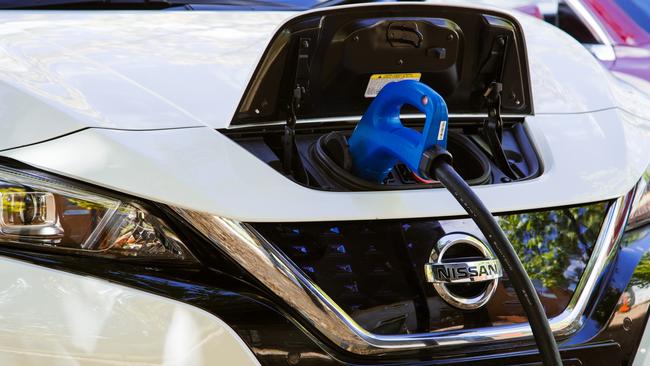
Slower AC charging is done via the common Type 2 plug , taking between 7.5 and 32 hours depending on what it’s connected to, while faster DC charging uses a CHAdeMO plug. The e+ has doubled its DC fast charging capacity to 100kW, allowing a 20-80 per cent charge in 45 minutes.
Verdict: Electric hatchback is basic to drive but full of charging potential
3 stars
Nissan Leaf e+
Price: From about $64,000 plus on-roads
Warranty/servicing: 5 yrs/unlimited km, $1413 for 5 yrs/100,000km
Safety: 5 stars, 6 airbags, autonomous emergency braking, lane keep assist, 360-degree camera, driver monitor, blind spot warning
Motor: electric motor driving the front wheels, 160kW/340Nm
Thirst: 18.0kWh/100km
Spare: Space-saver
Boot: 405L




